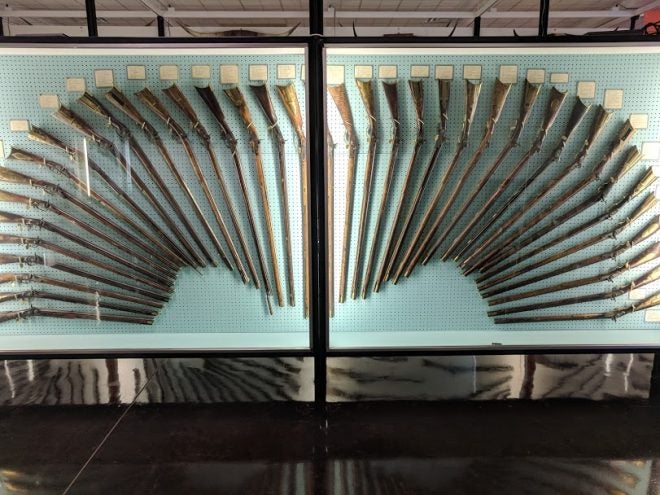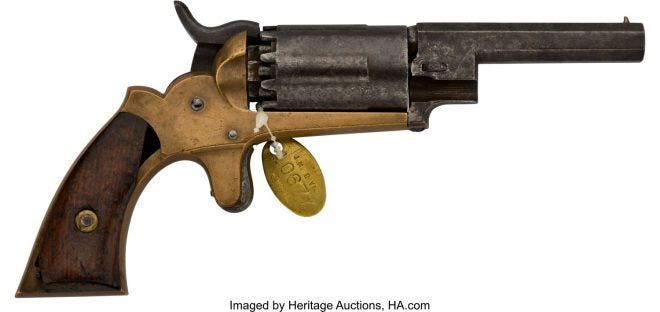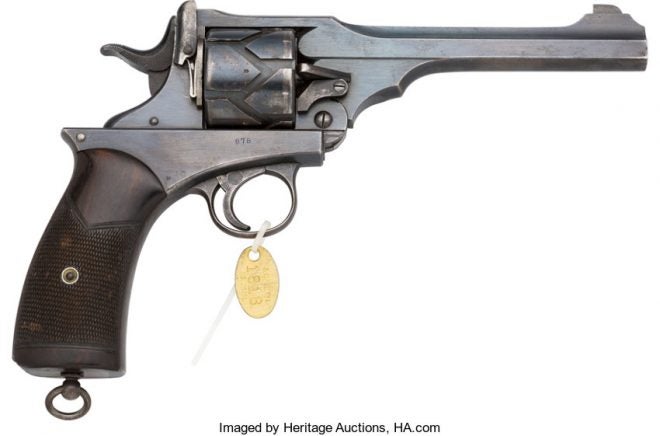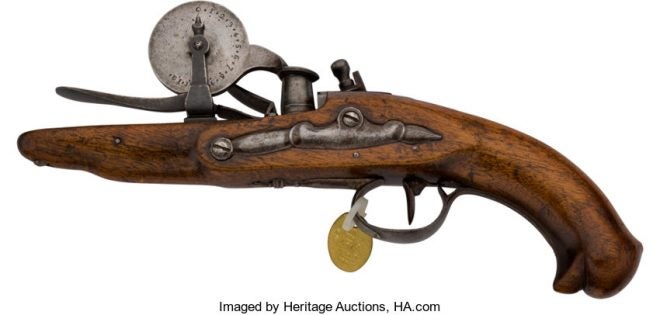The J.M. Davis Arms & Historical Museum in Claremore, Oklahoma, is home to the world’s largest privately-held firearms collection in the world. With more than 12,000 firearms and thousands of assorted items related to the firearms, it is quite the place. If you find yourself in the Tulsa area, you need to go. Once you’re in Claremore, which is northeast of Tulsa, you can’t miss the building. There’s an M41 Walker Bulldog tank sitting out front!

Author Photo
In an effort to ease the stress of caring for so many items and to free up some money to ensure that what they retain is cared for in the best way possible, the museum partnered with Heritage Auctions to sell off a total of 136 lots at their Arms & Armor, Civil War & Militaria Signature Auction on December 9 in Dallas, Texas. All of the guns come with their original brass museum inventory tags, adding to the historic provenance of the items sold.
It is incredibly important to note: the museum is NOT closing and they ONLY sold items that were duplicated in the collection. The historic integrity of the collection was NOT compromised in any way!
So, with that out of the way, here are some of the really cool objects from the museum’s collection that recently went across the auction block. In no particular order, they are:
COLT MODEL 1855 REVOLVING RIFLE

Made between 1856 and 1864, the revolving rifle was available in .36, .44, or .56 cal., with various barrel lengths between 15″ and 37″. Some had full stocks and others had no forestock, but all were percussion and featured a hunting scene on the cylinder.
The variation in this auction is called the “sporter” because it is not one of the martially-marked arms designated for the military. It is chambered in .44 caliber, has a 27″ barrel, and a total production run of about 2,000 guns.
Sold for $7,500.00
JOHN WALCH SUPERPOSED REVOLVER

New York gunsmith John Walch upped the ante on revolvers, equipping his guns with superposed cylinders capable of firing 10 shots. The gun has double hammers, but only one spur trigger. The barrel is 3 3/8″ long and the revolver is .31 caliber. Walch’s pocket models were made between 1859 and 1862 and were not serialized.
The idea of superposed loads was not new, but Walch was the first person to incorporate the design into a revolver. In an era of black powder arms and slow reloading, his pistol solved the problem by doubling your firepower before needing to reload.
Sold for $2,125.00

George V. Fosbery’s “automatic revolver” was patented in 1897. His design relied on the gun’s recoil to rotate the cylinder and cock the hammer. The barrel, cylinder, and hammer were all part of an upper assembly that moved back and forth on the lower frame of the revolver.
The zigzag grooves on the revolver’s cylinder are the model’s most iconic visual and functional distinction. Patented by William John Whiting in 1901, the grooves played an important role in the gun’s operation. When the top half of the revolver recoiled to the rear, the cylinder grooves were engaged by a stud on the frame. This engagement provided 30 degrees of rotation. As the recoil spring pushed the revolver forward, the cylinder rotated another 30 degrees and placed a new cartridge in line with the firing pin.
Sold for $13,750.00

Roper’s design was definitely unique for its time. Made between 1867 and 1876, the gun had a rotary magazine of sorts that was capable of holding four specially-made metallic cartridges that were 2.5″ long. Even though the shotgun used metallic cartridges, they were not what we think of today. The gun still utilized a percussion ignition system, albeit slightly modified. Access to the magazine was through a hinged cover on the right side of the receiver.
This 12 gauge shotgun has 28″ barrels, but you could have had one with barrels between 24″ and 28″. The receivers are casehardened and bear no serial numbers.
Sold for $1,625.00

Technically speaking, this item isn’t a firearm. It is, however, extremely important to the firearm industry. In an era before mass production and strict quality control parameters, batches of gunpowder were tested individually.
While the design of the eprouvette varied greatly and was utilized during both the flintlock and percussion eras, the concept remained the same. A charge of powder was loaded into the eprouvette, the hammer was cocked, and the trigger was pulled. The energy produced from the ignition of the powder moved either a wheel or a bar to a number on a wheel or a scale. That reading provided the power of the charge. If it fell within parameters, it passed. If not, it failed.
This particular flintlock eprouvette utilizes a wheel for measuring. When the powder ignites, the charge blows open the lid on top, which is attached to a numbered wheel. Whatever number the wheel is moved to (in this case, between 1 and 12) determines the strength and reliability of the powder. It wasn’t an exact science, but it was better than simply guessing and hoping.
Sold for $625.00
SUMMARY
The top 10 Davis items included the Webley-Fosbery, the Colt Model 1855 revolving rifle, two LeMat revolvers, a Japanese matchlock blunderbuss, a Rigby rifle, a Sharps pistol, a Winchester 1866 musket, and a DWM Luger pistol. Those 10 guns alone totaled $78,312.50 (including the 25% buyer’s premium). Of the 136 lots offered, only 4 went unsold. Those are available in an eBay-style “Buy It Now” option.
 Your Privacy Choices
Your Privacy Choices
